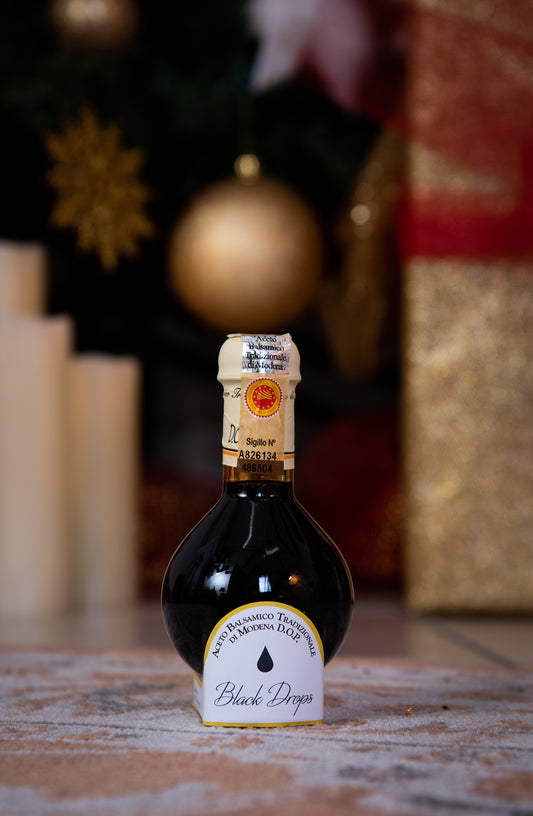PROPERTIES AND BENEFITS OF BALSAMIC VINEGAR
Obtained from the fermentation of grape must, it is always recognizable by its sweet-and-sour aftertaste and the thick but fluid consistency that distinguishes it. In addition to its inherent tart, smooth and satisfying note, balsamic vinegar possesses countless other qualities that make it an irresistible aroma that can be used to enhance and embellish any dish.
Balsamic vinegar is a product that fully belongs to the Italian culinary tradition and boasts countless beneficial qualities and properties.
Let's look at them in detail.
WHY TO USE BALSAMIC VINEGAR
Balsamic vinegar is rich in antioxidant substances derived from its high concentration of grape polyphenols.
Precisely because of this specific characteristic, balsamic vinegar counteracts free radicals that cause premature skin aging, while strengthening the immune system.
Recent studies show that balsamic vinegar helps to regulate blood sugar levels and is therefore also very suitable for use in the diets of people with diabetes.
Balsamic vinegar also boasts antiseptic properties; diluted in a little warm water, it is a good disinfectant for the oral cavity and relieves inflammation that can affect the throat.
In addition, balsamic vinegar can also be consumed by those following a low-calorie regimen. A drizzle of Balsamic Vinegar of Modena IGP, in fact, immediately adds flavor to dishes with a moderate amount of calories, especially those with lower density.
When seasoning dishes with balsamic vinegar, there is a greater sense of satiety, which helps regulate food cravings throughout the day.
Again, balsamic vinegar is a good source of minerals and contains potassium, phosphorus, calcium and magnesium. This is one reason why it helps prevent joint inflammation and osteoporosis and has good energizing properties.

HOW TO USE BALSAMIC VINEGAR
Balsamic vinegar lends itself to enhancing countless dishes, both traditional and innovative, and gives any cuisine a special sensory effect that is both tasty and surprising.
Extremely versatile, suitable for all types of dishes, from appetizers to first courses, from main courses to desserts, the use of balsamic vinegar is highly appreciated on raw or grilled vegetables, on meat or fish main courses and on salads, sliced meats and aged cheeses, but also on certain types of fruit and desserts.
When using it, it is always a good idea not to overdo the quantities to make sure that the addition of balsamic vinegar does not cover but enhances the flavors of individual dishes by enhancing their seasoning and taste.
The individual taste and the type of character one wants to give the dish always applies in any case: it is essentially these aspects that dictate the perfect dose.
On cooked foods, balsamic vinegar should be added a moment before stopping cooking so as to flavor the dish without altering the taste of the vinegar itself.
And it is good to remember that balsamic vinegar should be dosed wisely, it should always be put as the last ingredient and for some dishes to be preferred raw, in the final stage, just before serving at the table.









1 comment
Interessante!